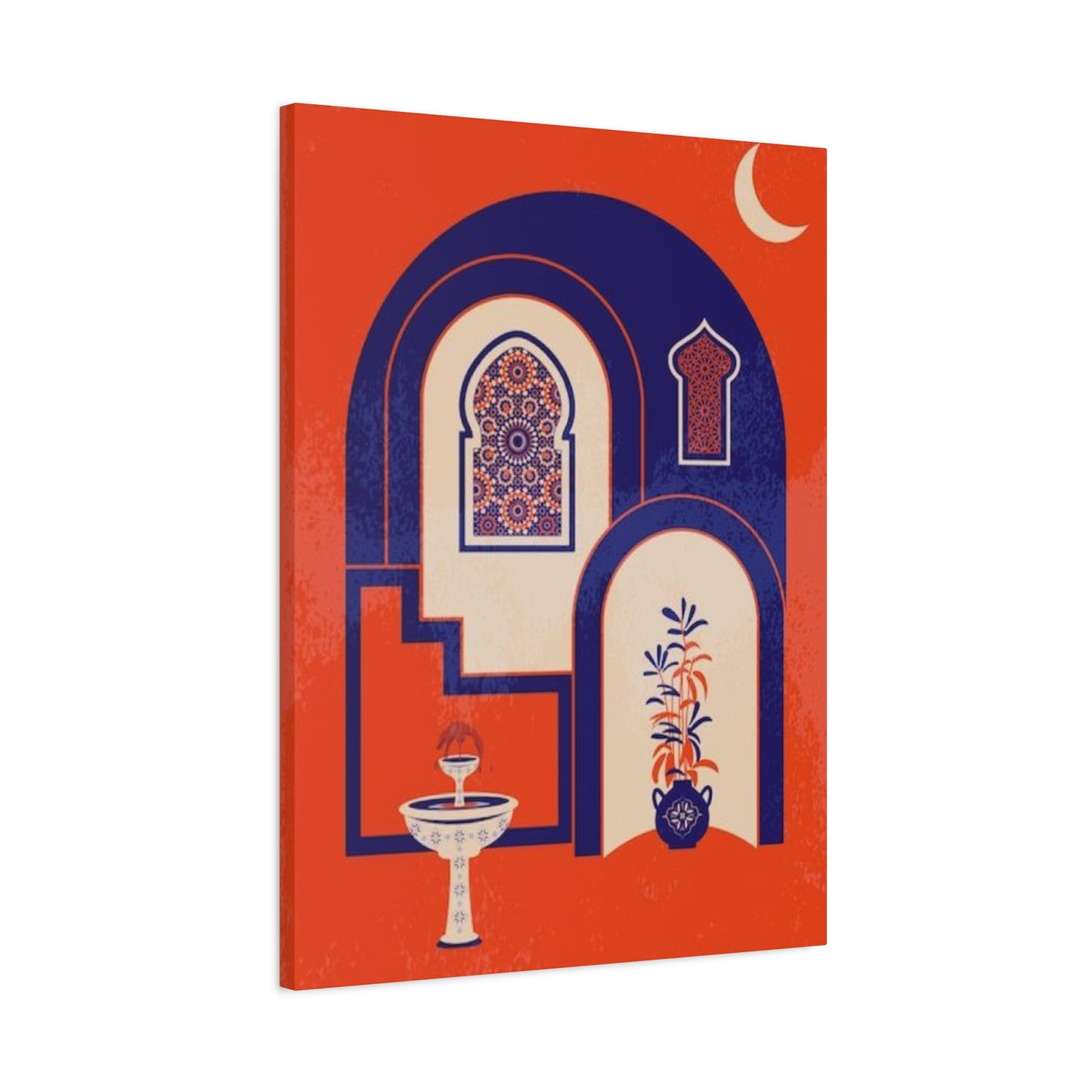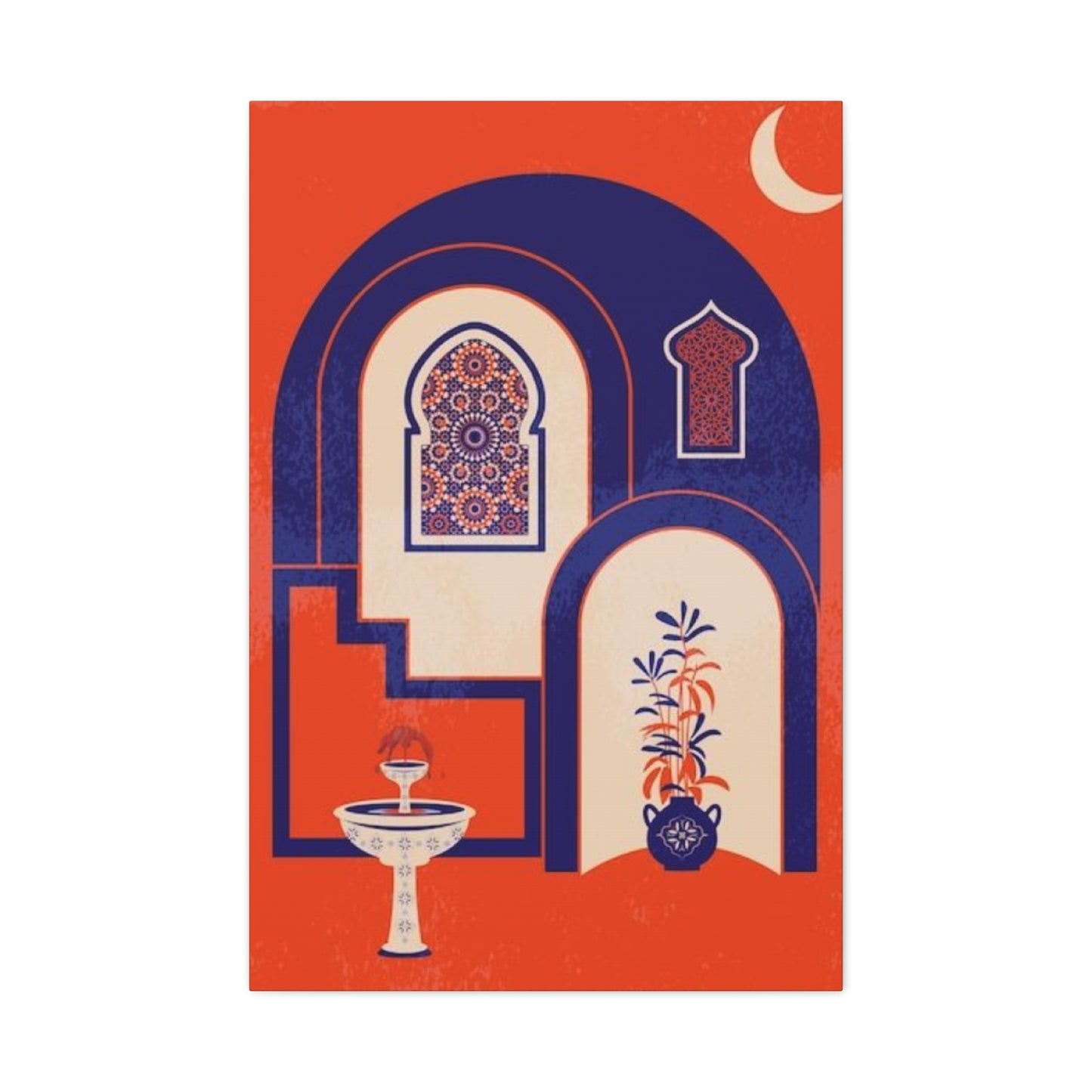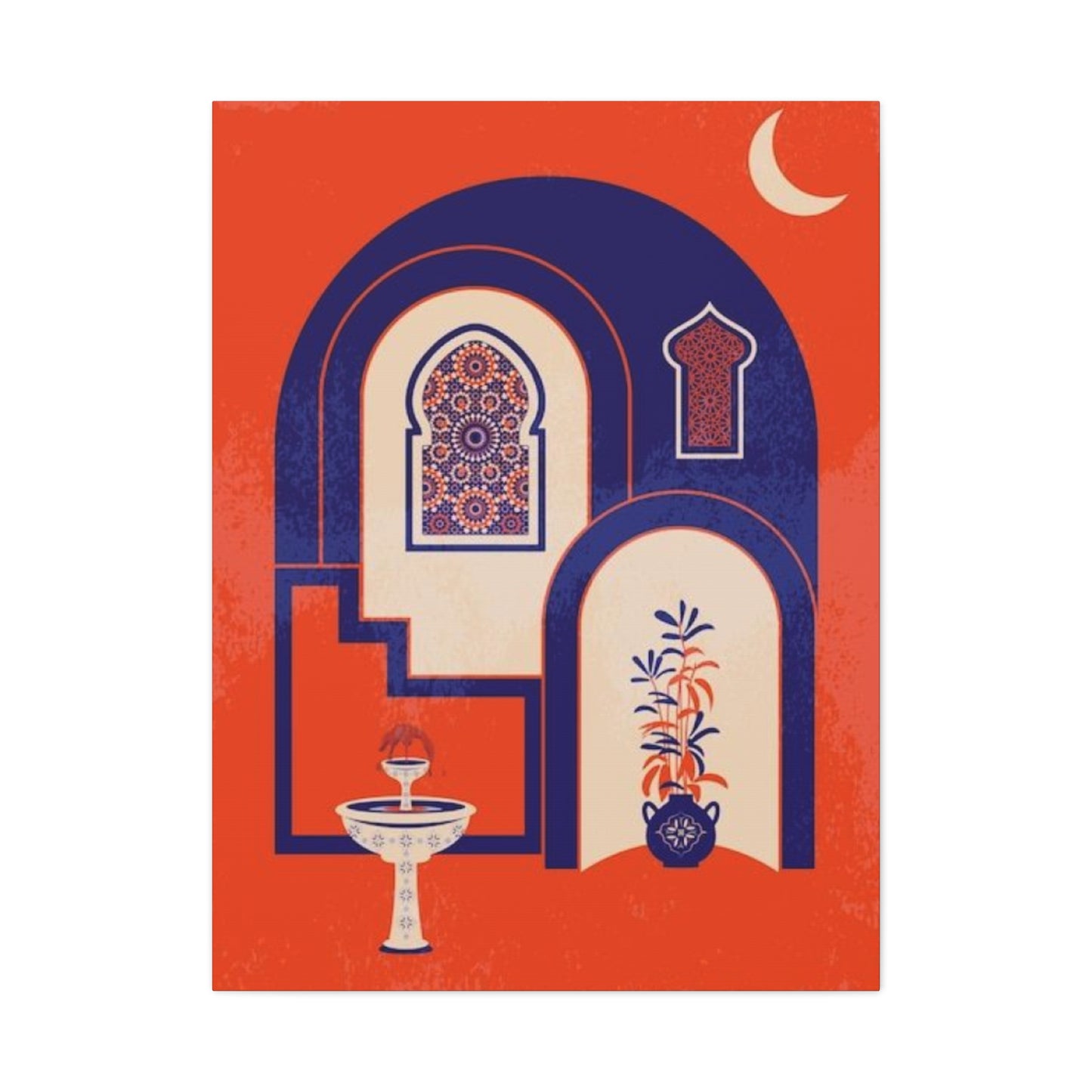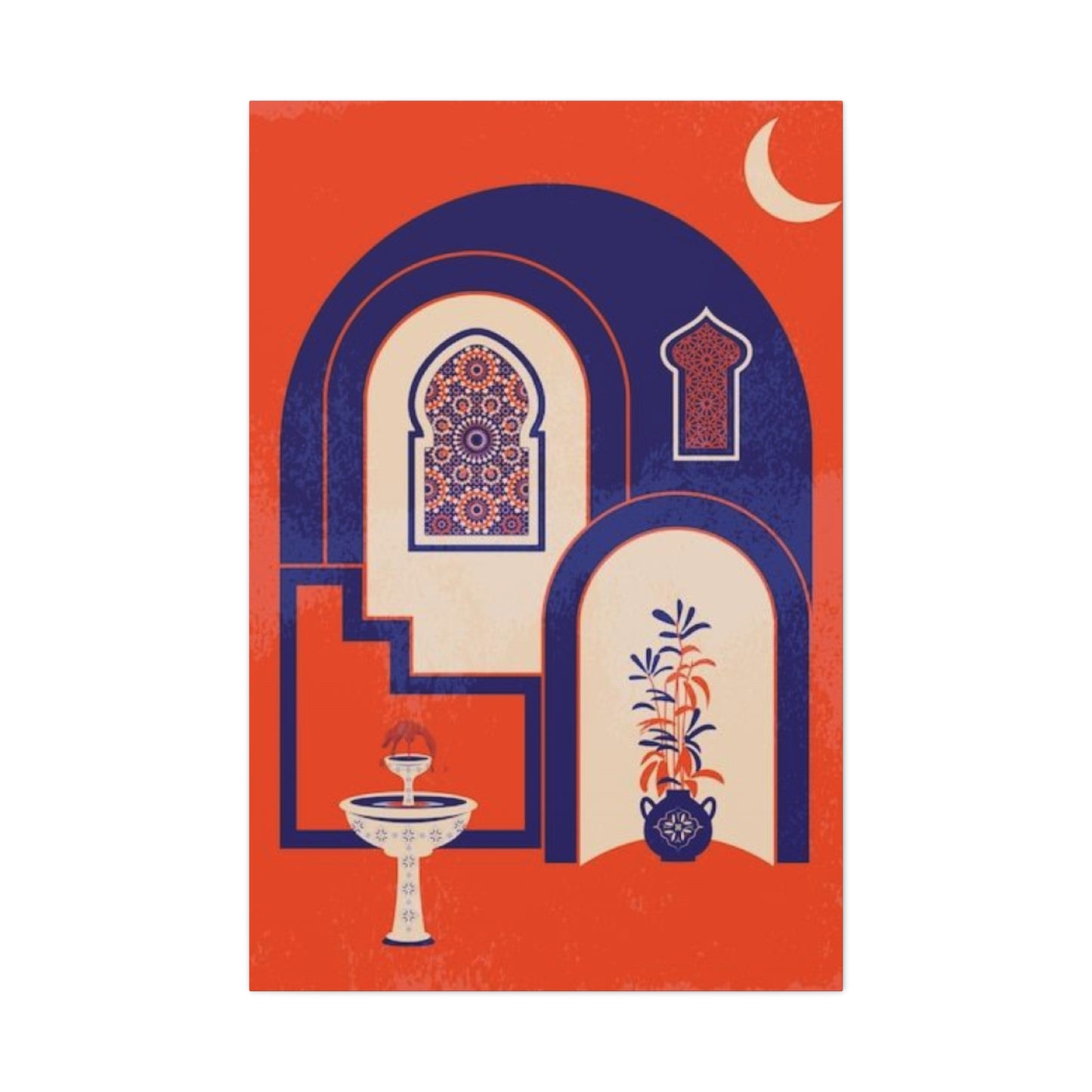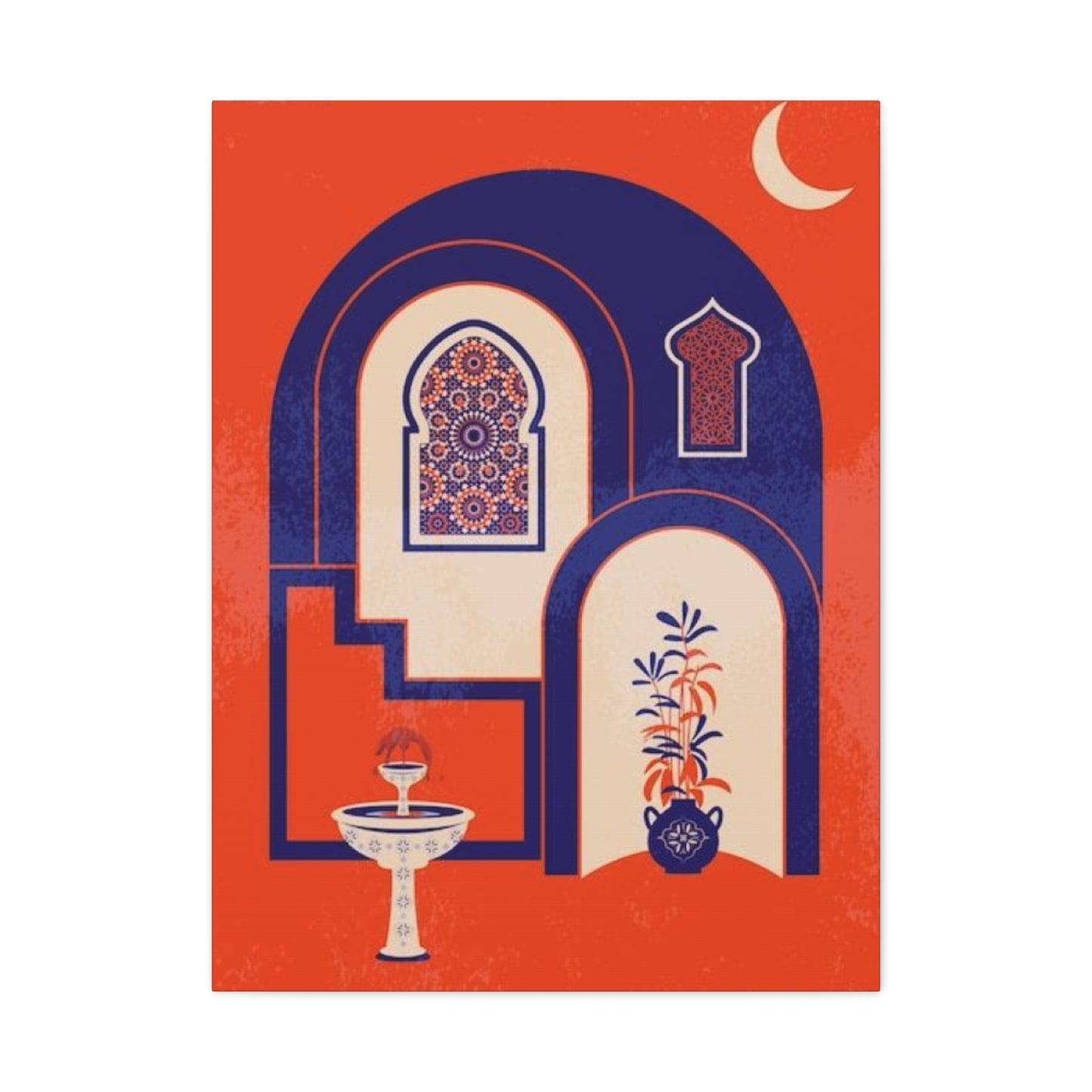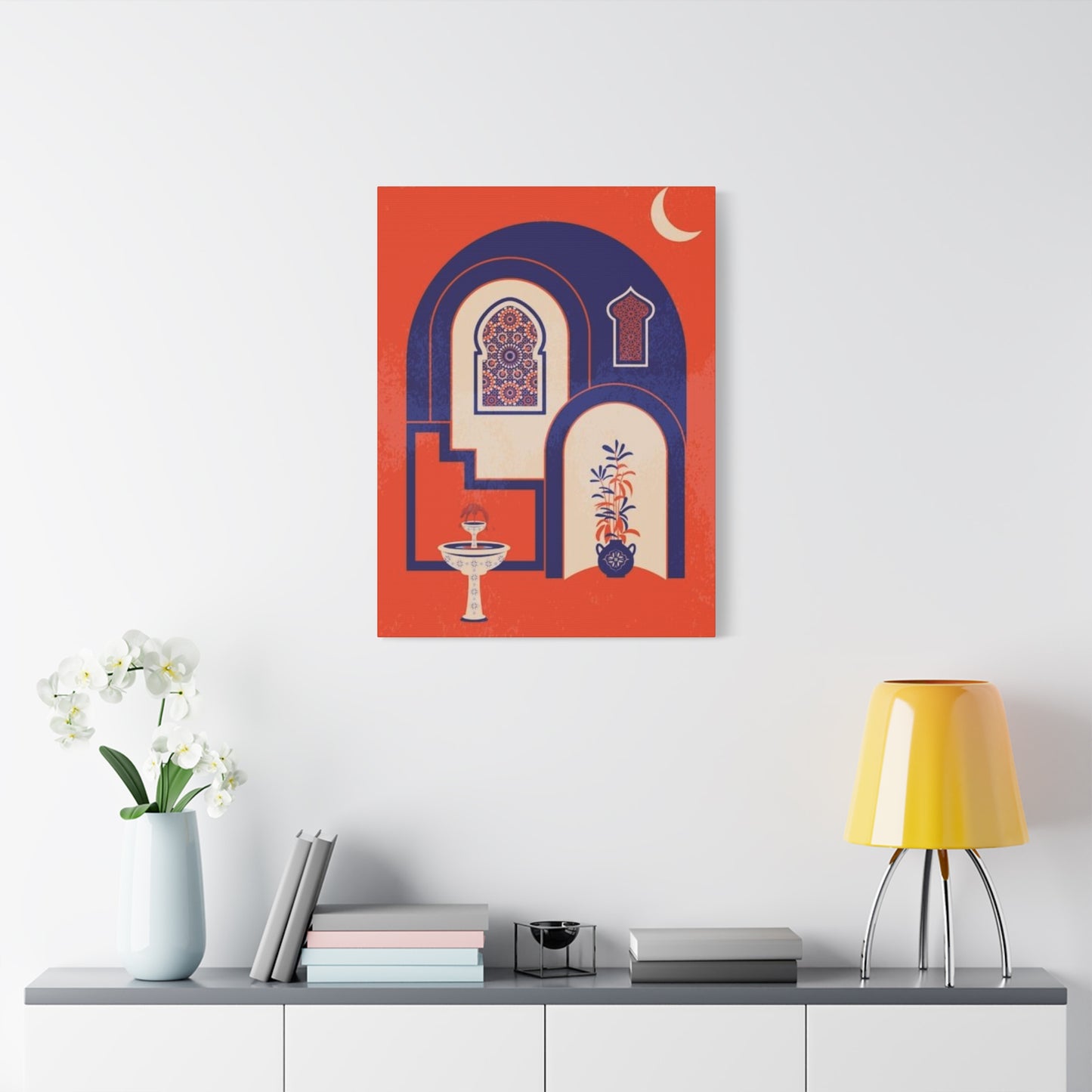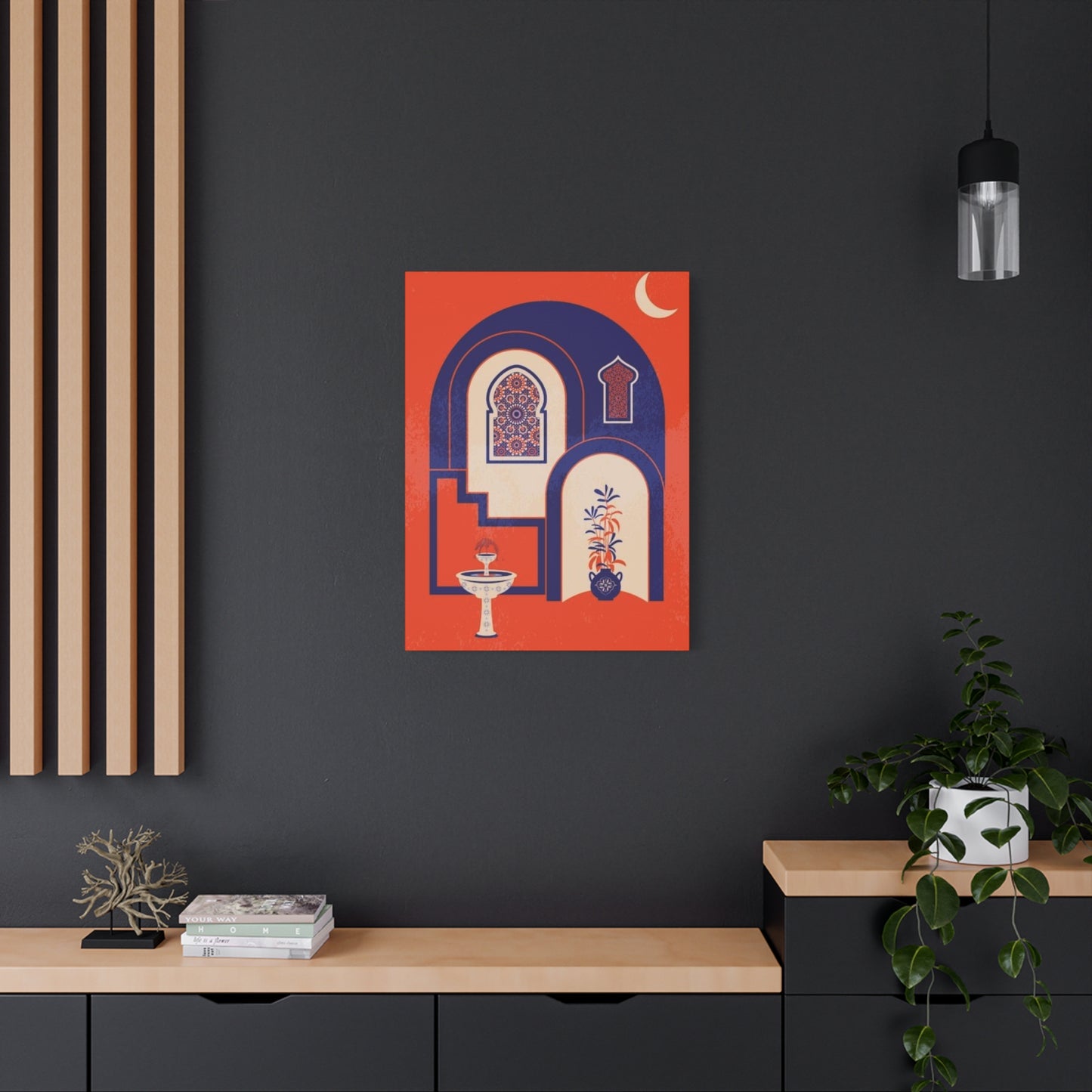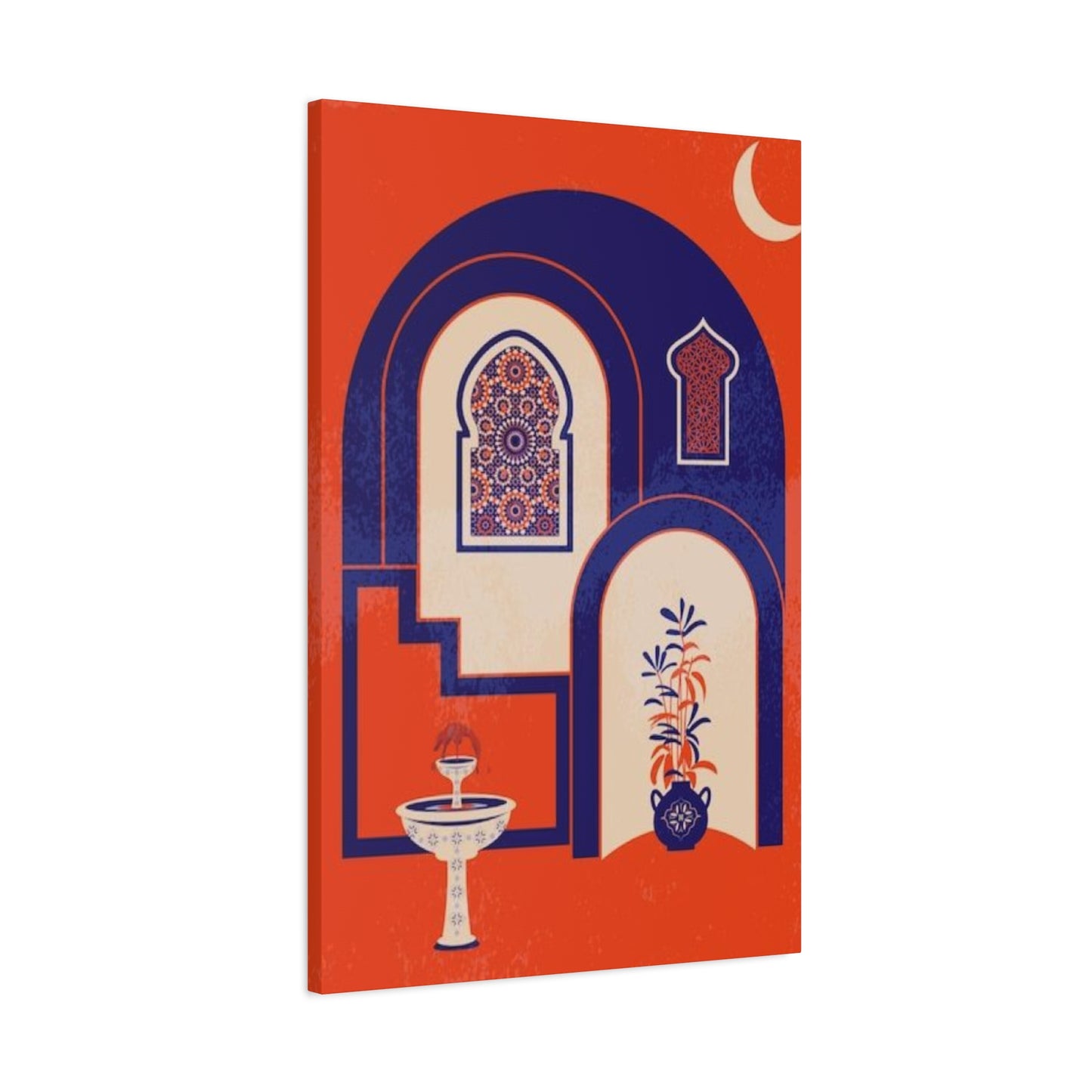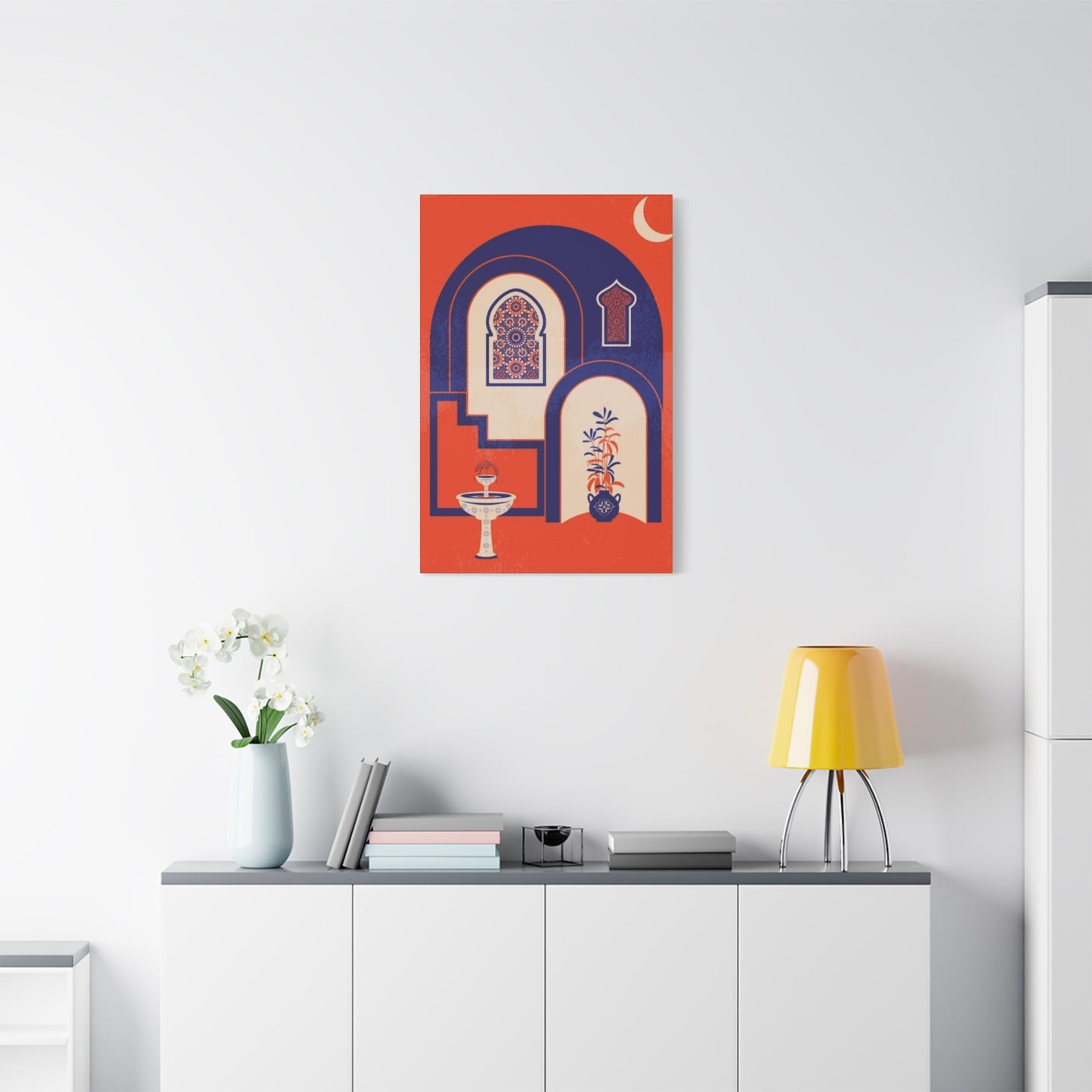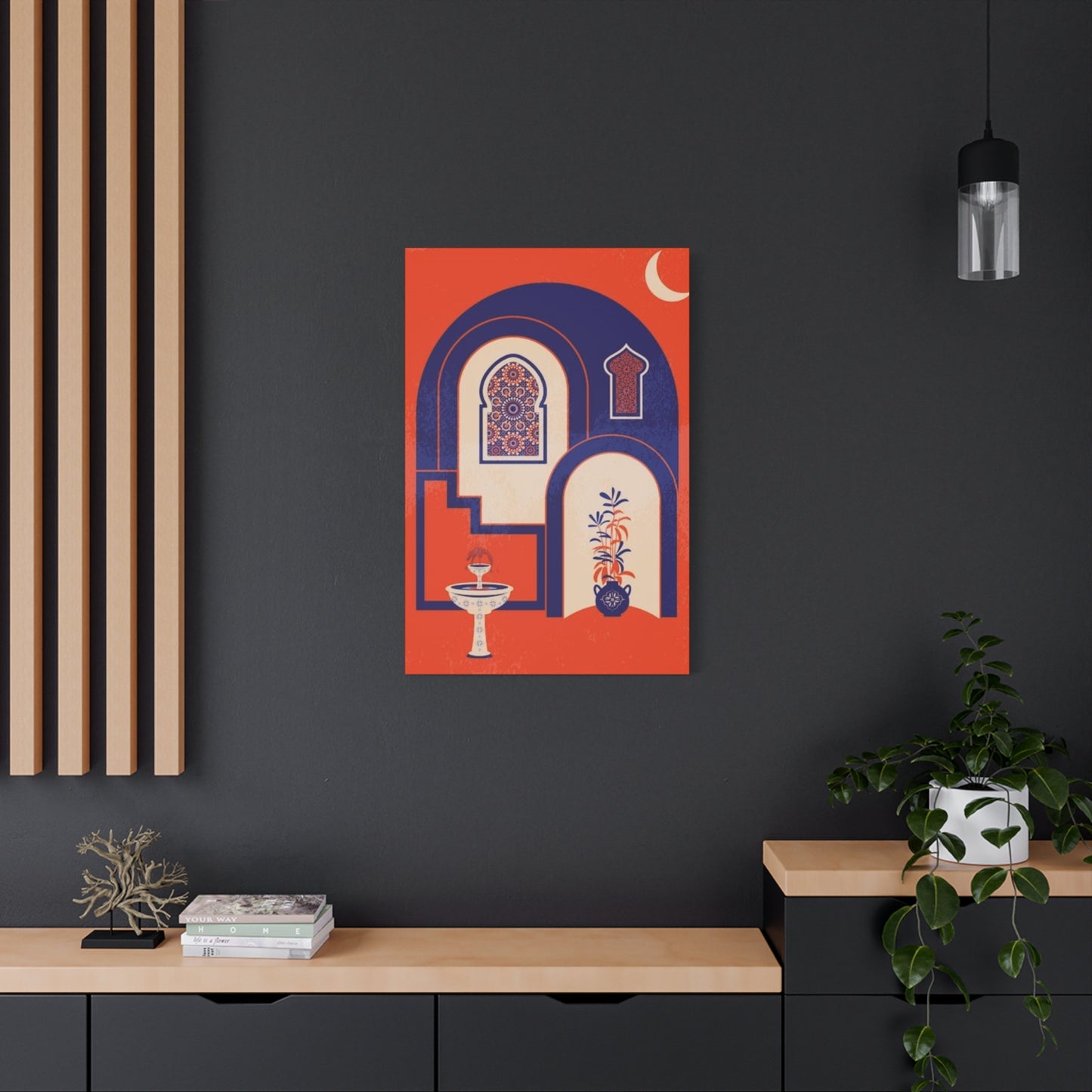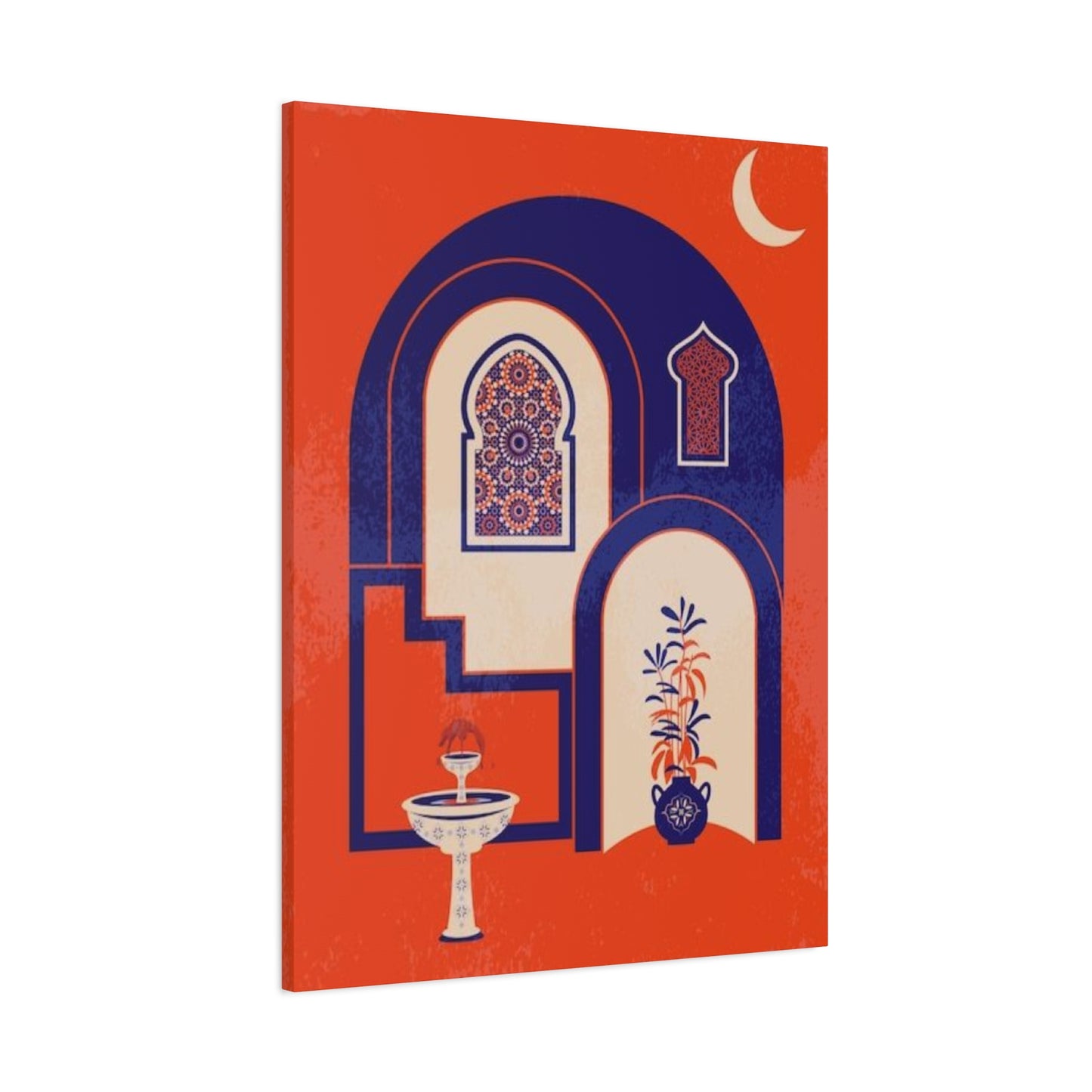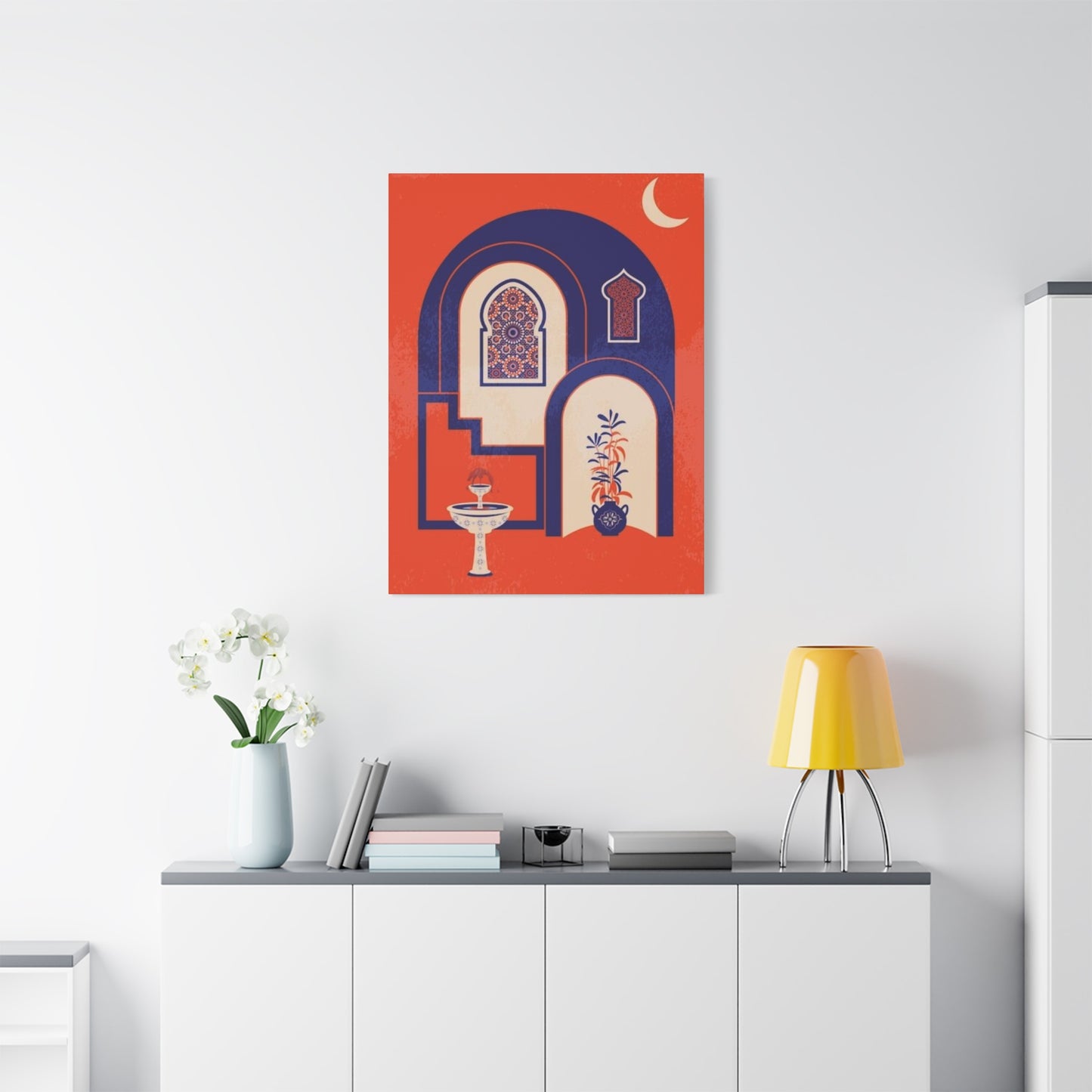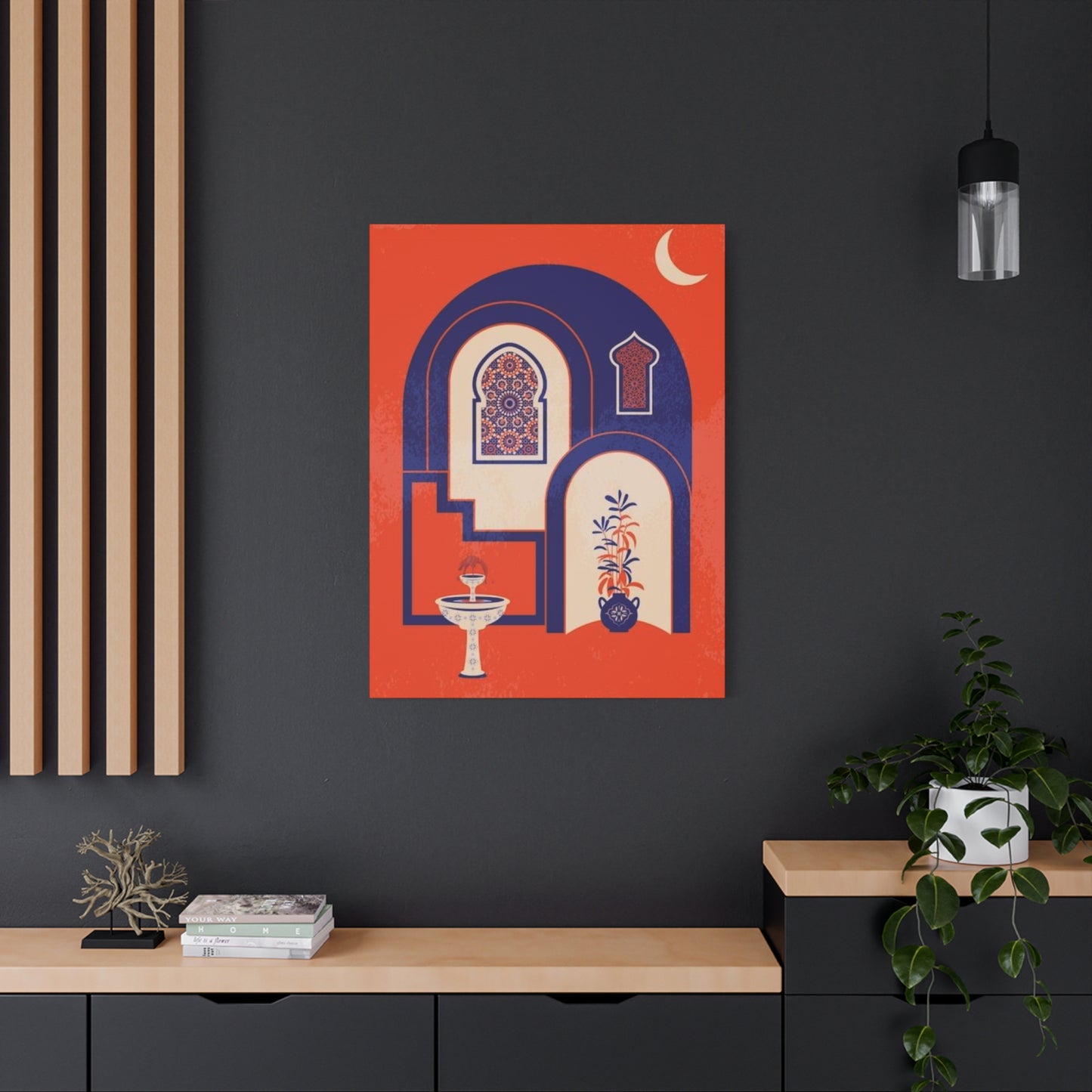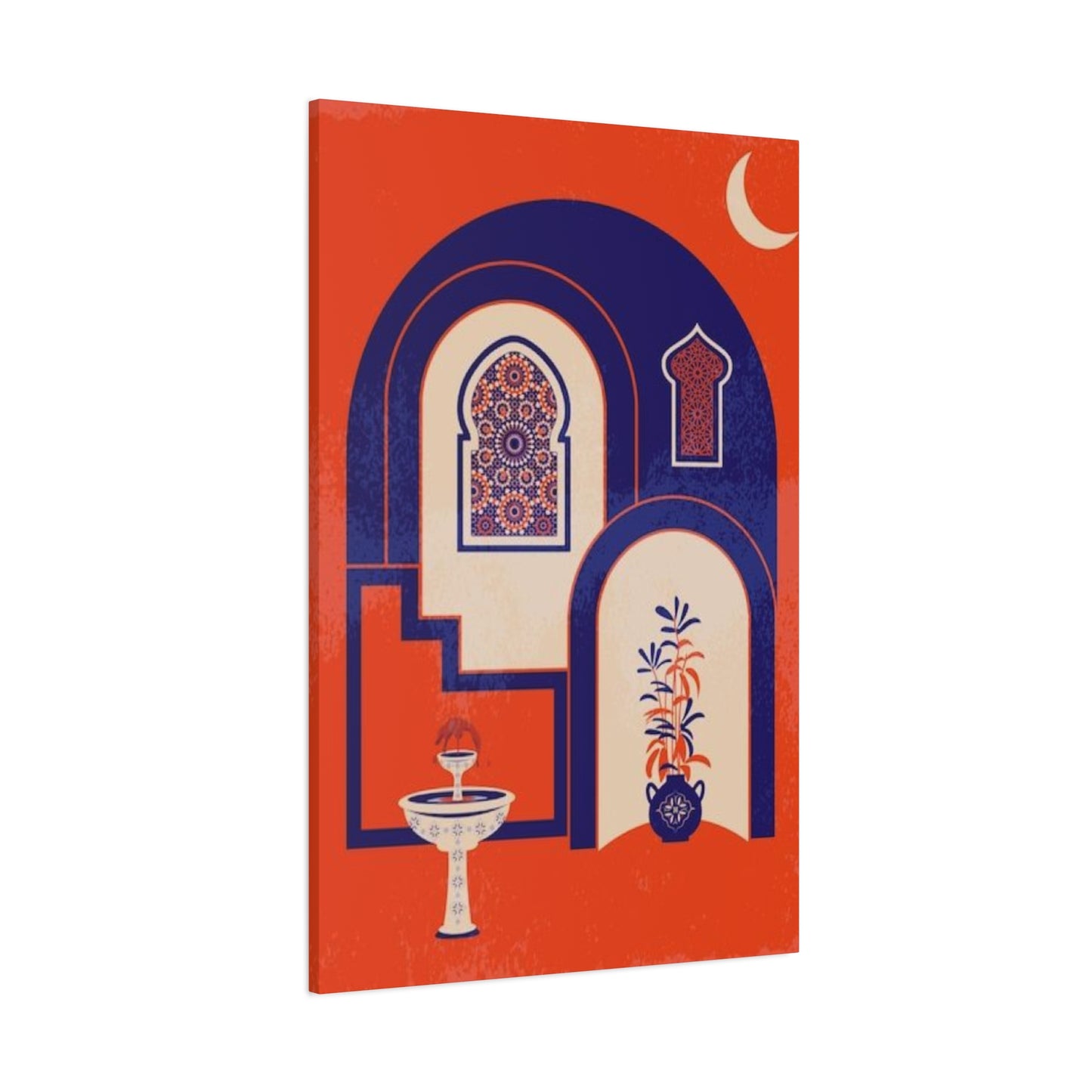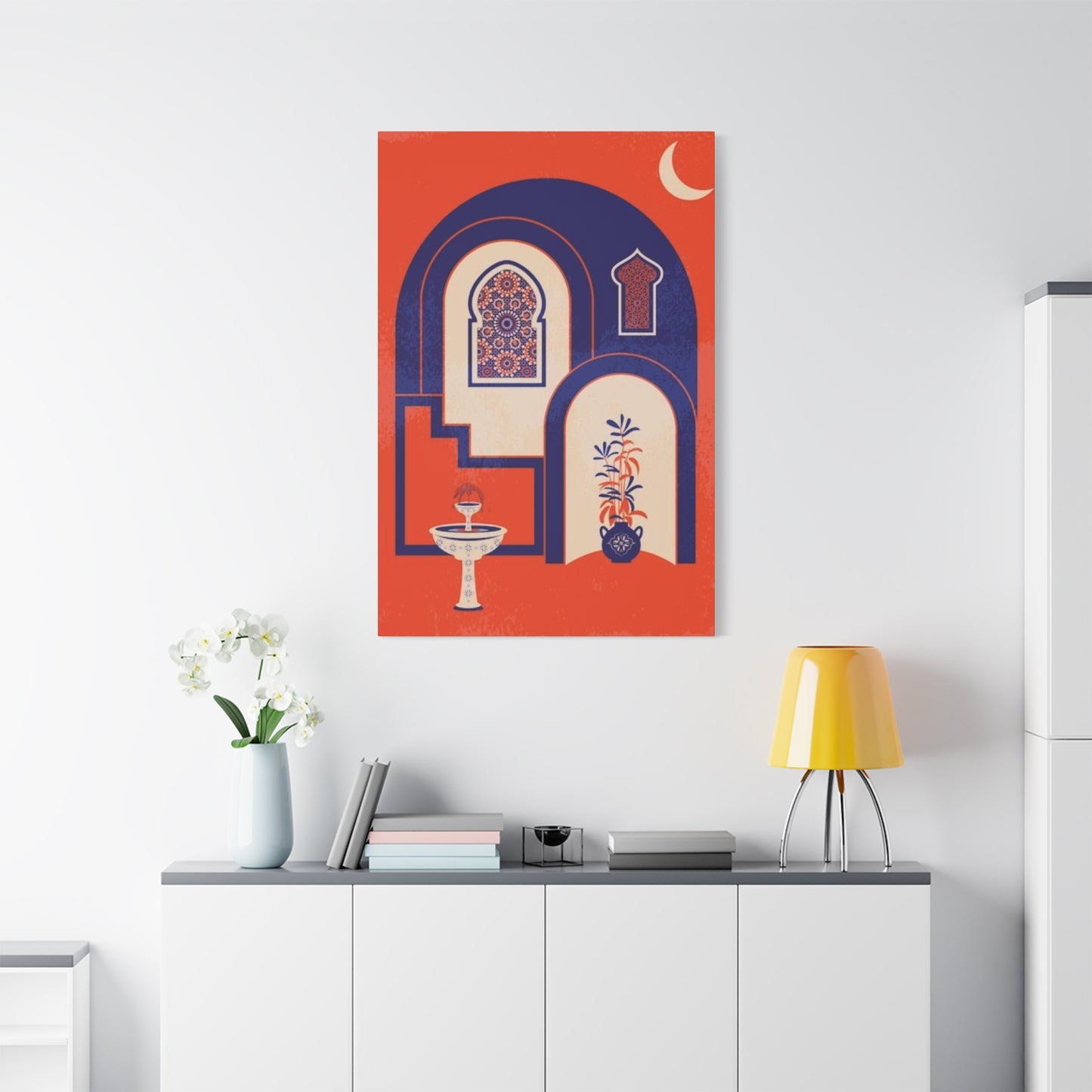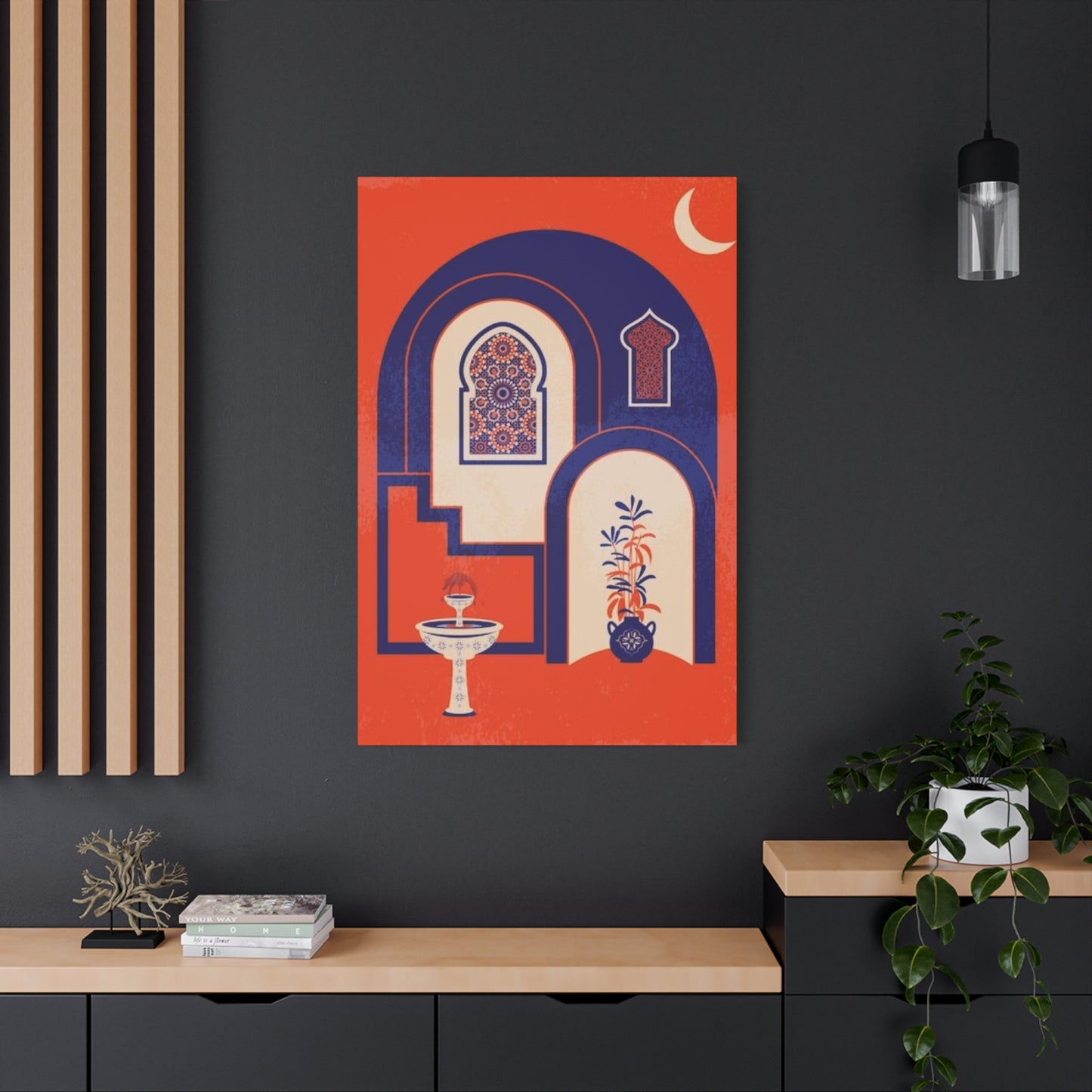How Artists Are Reinventing Moroccan Wall art Painting for the Contemporary Market
Moroccan artistic traditions represent centuries of cultural fusion, combining indigenous Berber aesthetics with Arab, African, and Mediterranean influences. The visual language of Moroccan creativity speaks through bold colors, intricate patterns, and symbolic representations that transform ordinary spaces into extraordinary environments. This comprehensive exploration delves into the multifaceted dimensions of Moroccan visual artistry, examining traditional techniques, contemporary interpretations, and the enduring appeal of these captivating artistic expressions that continue to inspire designers, collectors, and enthusiasts worldwide.
Vibrant Moroccan Painting Styles
The realm of Moroccan visual expression encompasses a remarkable spectrum of artistic approaches that reflect the nation's diverse cultural heritage and geographical landscapes. These painting traditions draw inspiration from the azure coasts of the Atlantic and Mediterranean, the golden expanses of the Sahara Desert, and the verdant valleys of the Atlas Mountains. Artists working within this tradition employ techniques that have been refined over generations, creating works that resonate with both historical significance and contemporary relevance.
Moroccan painters have long embraced a philosophy of maximalism, where abundance of detail and richness of color serve as foundational principles. This approach stands in stark contrast to minimalist Western aesthetics, instead celebrating visual complexity and ornamental richness. The layering of patterns, the interplay of complementary and contrasting hues, and the meticulous attention to decorative elements create compositions that reward extended viewing and contemplation.
The artistic vocabulary employed by Moroccan painters includes a distinctive palette dominated by deep blues reminiscent of the Mediterranean Sea, warm terracottas echoing the earth of the Saharan regions, brilliant whites reflecting the sun-drenched architecture of coastal cities, and vibrant greens symbolizing the oases and gardens that punctuate arid landscapes. These colors are not merely decorative choices but carry deep cultural and spiritual significance within Moroccan society.
Traditional painting methods often involve natural pigments derived from minerals, plants, and earth, creating colors with remarkable depth and longevity. Artists grind these materials manually, mixing them with binding agents to produce paints that possess unique textural qualities. This labor-intensive process connects contemporary practitioners with ancestral techniques, maintaining continuity with historical artistic practices while allowing for individual creative expression.
Traditional Moroccan Wall Art Designs
The architectural surfaces of Moroccan buildings have historically served as canvases for elaborate decorative programs that transform functional structures into artistic statements. These traditional designs encompass a vast repertoire of visual elements that have been developed and refined over centuries of continuous practice. The application of decorative treatments to walls represents an integral aspect of Moroccan architectural philosophy, where beauty and functionality exist in harmonious balance.
Historical wall treatments in Moroccan contexts often employed tadelakt, a waterproof plaster finish that creates smooth, lustrous surfaces ideal for receiving painted decorations. This material, derived from limestone found near Marrakech, provides an excellent substrate for pigments and allows for subtle color variations and textural effects that enhance the visual impact of applied designs. The preparation and application of tadelakt requires specialized knowledge passed down through generations of craftspeople.
Zellij, the mosaic tilework characteristic of Moroccan design, frequently inspires painted wall treatments that replicate the geometric complexity of ceramic installations through less permanent but equally striking painted interpretations. Artists translate the intricate interlocking patterns of zellij into painted forms that maintain the mathematical precision and visual rhythm of their ceramic counterparts while offering greater flexibility in scale and color application.
The division of wall surfaces into distinct decorative zones represents a common organizational strategy in traditional Moroccan design. Lower portions of walls might receive dense, complex patterning, while upper sections feature more open compositions or different decorative treatments entirely. This hierarchical approach creates visual interest through variation while maintaining overall compositional coherence across large architectural surfaces.
Borders and framing elements play crucial roles in traditional wall designs, defining spaces and creating transitions between different decorative zones. These transitional elements often employ calligraphic inscriptions, geometric bands, or stylized floral motifs that guide the eye and provide visual punctuation within larger decorative schemes. The careful consideration of these connective elements distinguishes sophisticated traditional designs from less refined interpretations.
Geometric Patterns in Moroccan Paintings
The mathematical underpinnings of Moroccan geometric design reflect sophisticated understanding of proportion, symmetry, and spatial relationships that predate modern computational geometry. These patterns derive from complex grid systems that allow for the generation of infinite variations while maintaining underlying structural integrity. Artists and craftspeople working within this tradition possess deep knowledge of these generative systems, enabling them to create compositions that appear spontaneous while adhering to rigorous mathematical principles.
The star polygon serves as a foundational element in Moroccan geometric vocabulary, with variations ranging from simple eight-pointed stars to complex configurations involving twelve, sixteen, or more points. These stellar forms often anchor compositions, providing focal points around which subsidiary patterns organize themselves. The construction of these stars requires precise angular measurements and careful planning, demonstrating the technical expertise characteristic of traditional Moroccan artistic practice.
Interlacing patterns, where linear elements weave over and under one another in regular sequences, create visual effects of depth and movement within two-dimensional surfaces. These woven compositions reference textile traditions while employing geometric logic distinct from fabric construction. The careful planning required to maintain consistent interlacing patterns across large surfaces demonstrates the mathematical sophistication underlying seemingly decorative artistic choices.
Tessellation, the complete covering of surfaces with non-overlapping geometric shapes, represents another key strategy in Moroccan geometric design. Artists employ various regular and semi-regular tessellations, sometimes incorporating multiple shape families within single compositions. These space-filling patterns create seamless decorative surfaces that can extend indefinitely, making them particularly suitable for architectural applications where continuous decoration across large areas is desired.
The use of negative space in geometric compositions creates breathing room within dense patterning, preventing visual saturation while maintaining decorative richness. Strategic placement of unadorned areas allows the eye to rest while emphasizing the complexity of decorated zones. This sophisticated understanding of visual rhythm distinguishes masterful compositions from overwhelming accumulations of pattern.
Hand-Painted Moroccan Tile Art
The tradition of hand-painting ceramic tiles represents one of the most distinctive and recognizable aspects of Moroccan decorative arts. This practice combines ceramic technology, pigment chemistry, and artistic skill to produce durable decorative elements that have adorned Moroccan buildings for centuries. The creation of these painted tiles involves multiple specialized stages, each requiring specific expertise and careful execution to achieve successful results.
Tile preparation begins with the formation of clay bodies that possess appropriate plastic properties for shaping and sufficient thermal stability to withstand firing cycles. Traditional Moroccan pottery centers like Fez and Safi have developed distinctive clay bodies suited to their local materials and established firing practices. The preparation of these clay mixtures involves careful selection of raw materials, grinding, mixing, and aging processes that develop optimal working characteristics.
The formation of tile blanks traditionally employed press-molding techniques that allowed for consistent sizing and thickness across production batches. These uniform blanks provide stable surfaces for subsequent decoration while maintaining the slight irregularities that distinguish handmade objects from industrial productions. The edges of handmade tiles often retain subtle variations that contribute to the overall character of installations.
Application of base glazes creates the white or colored grounds upon which decorative painting occurs. These base coats must achieve proper fusion with the underlying clay body while providing receptive surfaces for overglaze decoration. The chemistry of these base glazes requires careful balancing of components to achieve appropriate thermal expansion coefficients, surface texture, and color development.
Decorative painting employs specialized ceramic pigments capable of withstanding high firing temperatures while maintaining color integrity. Traditional palettes centered on cobalt blue, manganese purple, copper green, and antimony yellow, colors derived from metallic oxides that remain stable under firing conditions typical of traditional Moroccan kilns. Contemporary practitioners have expanded these palettes while respecting the aesthetic conventions established by historical examples.
Brushwork techniques passed down through apprenticeship relationships enable painters to execute complex designs with remarkable speed and precision. The fluid application of pigment to slightly absorbent glaze surfaces requires controlled brush handling and confident execution. Hesitation or overworking can disrupt the spontaneous quality that characterizes successful tile painting, making this practice one where experience and skill directly determine output quality.
The firing of decorated tiles represents the culminating stage where applied decoration fuses permanently with the underlying glaze layer. Temperature control during firing critically affects color development, with insufficient heat producing pale, underdeveloped colors while excessive temperature can cause pigment migration or glaze defects. Traditional wood-fired kilns required extensive knowledge of fuel management and temperature assessment through visual observation of kiln conditions.
Moroccan Colors in Wall Paintings
The chromatic vocabulary of Moroccan visual culture reflects geographical, historical, and cultural influences that have shaped the region's aesthetic preferences over centuries. These color traditions arise from both practical considerations related to available pigment sources and symbolic associations embedded in religious and social customs. Understanding the significance of specific colors within Moroccan contexts enriches appreciation of artistic works that employ these carefully considered chromatic relationships.
Blue occupies a position of particular prominence in Moroccan color symbolism, representing protection, spirituality, and connection to the divine. The widespread use of blue in decorative contexts relates to both aesthetic preferences and beliefs about the color's protective properties. Various blue tones appear throughout Moroccan art, from pale sky blues to deep indigos, each carrying slightly different associations while contributing to the overall blue-dominated aesthetic characteristic of many Moroccan spaces.
Earth tones including ochres, siennas, and umbers reference Morocco's desert landscapes and traditional building materials. These warm colors create connections between architectural decoration and natural environments, grounding compositions in physical reality while providing counterbalance to cooler chromatic elements. The use of earth pigments also connects contemporary practice to ancestral techniques, as these colors have been derived from local mineral sources for centuries.
White functions as both a practical and symbolic color in Moroccan contexts. The brilliant whitewashed surfaces of coastal cities reflect intense sunlight while creating visual drama through stark contrast with intensely colored decorative elements. Symbolically, white represents purity, simplicity, and spiritual clarity, making it an appropriate background for religious inscriptions and sacred geometry.
Green carries strong religious associations in Islamic culture, representing paradise, renewal, and life. In Moroccan decorative arts, various green tones appear in both naturalistic floral representations and abstract decorative contexts. The symbolic weight of green influences its deployment within compositions, with artists carefully considering placement and relationships to other colors when incorporating this significant hue.
Red, particularly in its deeper crimson and burgundy manifestations, appears frequently in Moroccan color schemes, adding warmth and visual intensity to compositions. These red tones reference traditional dyes used in textile production, creating connections between different craft traditions. The psychological impact of red as an advancing, energizing color makes it effective for creating focal points and directing visual attention within complex compositions.
Gold and metallic accents introduce luminosity and preciousness to painted compositions, elevating decorative treatments beyond mere surface embellishment to statements of aesthetic ambition and cultural value. The use of gold leaf or metallic pigments requires specialized application techniques and adds significant labor and material costs to projects, making these enhanced treatments markers of importance and prestige.
Contemporary color applications increasingly incorporate expanded palettes that include fuchsia, teal, and other hues not traditionally prominent in historical Moroccan work. These color innovations demonstrate the continuing evolution of Moroccan visual culture, as contemporary artists balance respect for tradition with responsiveness to current aesthetic sensibilities and international design trends.
Abstract Moroccan Art for Modern Homes
The adaptation of Moroccan visual traditions to contemporary residential contexts has produced innovative artistic approaches that maintain cultural authenticity while addressing modern aesthetic preferences. Abstract interpretations of traditional motifs allow for creative flexibility while preserving essential characteristics that identify works as distinctly Moroccan in origin. This synthesis of traditional and contemporary approaches creates artwork suitable for diverse interior design schemes while maintaining cultural specificity.
Distillation of complex traditional patterns into simplified forms represents one strategy for creating contemporary Moroccan-inspired artwork. Artists extract essential geometries or color relationships from historical examples, presenting these elements in pared-down compositions that read as modern while retaining connections to source traditions. This reductive approach produces works that function effectively in minimalist interiors where full traditional complexity might overwhelm.
The exploration of scale represents another avenue for contemporary reinterpretation, with artists creating oversized renditions of traditional motifs or fragmentary close-up views that transform familiar patterns through altered perspective. These scale shifts encourage fresh engagement with traditional forms, inviting viewers to consider familiar elements from new viewpoints. The monumental presentation of details typically seen as parts of larger compositions elevates these elements to primary subjects worthy of sustained attention.
Experimental color applications push beyond traditional chromatic conventions, introducing unexpected hue combinations while maintaining compositional structures derived from historical precedents. This separation of form and color allows for creative freedom while preserving the mathematical and structural sophistication of traditional designs. The resulting works bridge traditional and contemporary aesthetics, appealing to collectors seeking cultural authenticity within modern visual frameworks.
Mixed media approaches combine traditional Moroccan visual elements with diverse materials and techniques drawn from international contemporary art practices. Artists might incorporate photographic elements, found materials, or digital processes alongside hand-painted traditional motifs, creating layered works that reference multiple cultural and temporal contexts simultaneously. These hybrid works reflect the complex identity negotiations characteristic of contemporary Moroccan artistic practice.
The investigation of negative space and compositional breathing room represents a significant departure from traditional maximalist approaches. Contemporary artists working in Moroccan-inspired modes increasingly employ restraint, allowing significant portions of surfaces to remain unadorned while concentrating decorative intensity in selected areas. This measured approach aligns with minimalist tendencies in contemporary interior design while maintaining connection to Moroccan visual vocabulary.
Textural experimentation introduces physical dimensionality to works inspired by traditionally flat decorative treatments. Artists might employ impasto techniques, collage, or assemblage to create relief surfaces that cast shadows and catch light dynamically. These textural investigations add sensory richness to contemporary works while maintaining visual connections to historical precedents.
The creation of modular series allows collectors to assemble multiple smaller works into larger configurations, providing flexibility for different spatial contexts while maintaining individual artwork integrity. This approach recognizes contemporary residential realities where large single works might prove impractical while offering opportunities for personalized arrangements that respond to specific architectural situations.
Moroccan Courtyard Scenes in Paintings
The traditional Moroccan courtyard, or riad, serves as a rich subject for artistic representation, embodying distinctive architectural philosophy and lifestyle practices unique to North African Islamic culture. These interior garden spaces represent microcosmic representations of paradise, combining natural and constructed elements into harmonious environments that provide respite from urban intensity. Artists depicting these spaces confront challenges of representing architectural complexity, botanical variety, and atmospheric qualities that define these distinctive environments.
The architectural enclosure of traditional courtyards creates specific lighting conditions as sunlight enters from above, casting dramatic shadows and creating strong contrasts between illuminated and shaded areas. Painters capturing these spaces must address these challenging lighting situations, often employing heightened chiaroscuro effects to convey the distinctive atmospheric qualities of enclosed gardens. The representation of dappled light filtering through vegetation presents particular technical challenges requiring sophisticated observational skills and painterly technique.
Water features constitute essential elements in courtyard compositions, introducing reflective surfaces, sound, and movement into these otherwise static architectural environments. The representation of water in various states including still pools, flowing fountains, and splashing jets requires different technical approaches and offers opportunities for demonstrating artistic virtuosity. The interplay between water and surrounding architectural elements creates complex visual relationships that reward careful observation and skillful rendering.
The vegetation inhabiting traditional courtyards typically includes combinations of citrus trees, jasmine, roses, and other flowering plants selected for their sensory qualities including fragrance, visual beauty, and symbolic significance. Artists depicting these spaces must balance botanical accuracy with compositional requirements, sometimes simplifying or rearranging plantings to achieve desired visual effects. The seasonal nature of courtyard gardens means that appearances vary throughout the year, allowing for multiple valid representations of single locations.
Architectural details including carved plaster, painted woodwork, and ceramic tile installations provide rich decorative contexts within courtyard scenes. The accurate representation of these intricate elements requires careful observation and precise rendering techniques. Some artists choose to suggest decorative complexity through abbreviated notation while others pursue meticulous documentation of specific pattern systems and decorative programs.
The human presence or absence in courtyard representations significantly affects narrative tone and viewer engagement. Unpopulated courtyard scenes emphasize architecture and spatial qualities while creating contemplative, timeless atmospheres. The introduction of figures activates spaces narratively, raising questions about social relationships, daily activities, and the human dimension of these architectural environments. Artists must carefully consider appropriate scale, placement, and activity for any human figures included in compositions.
Viewpoint selection critically determines compositional structure and viewer relationship to depicted spaces. Ground-level views create intimate engagement with courtyard environments while elevated perspectives reveal spatial organization and decorative programs more completely. Artists sometimes employ unconventional viewing angles to create distinctive compositions that challenge conventional architectural representation while maintaining spatial legibility.
Atmospheric perspective and depth representation present particular challenges in courtyard painting due to the relatively compressed spatial depths typical of these environments. Artists must employ subtle gradations of value, color temperature, and detail density to create convincing spatial recession within confined areas. The successful negotiation of these challenges distinguishes accomplished courtyard paintings from less sophisticated attempts.
Intricate Moroccan Motifs on Canvas
The translation of traditional Moroccan decorative vocabulary onto stretched canvas surfaces represents a significant adaptation of motifs originally conceived for architectural contexts. This transfer involves considerations of scale, material properties, and viewing conditions distinct from traditional applications while maintaining the essential characteristics that identify these designs as Moroccan in origin. Artists working in this mode navigate between fidelity to source traditions and necessary adaptations required by changed material circumstances.
Canvas preparation for receiving detailed motif work requires careful attention to ground selection and application. Artists must achieve sufficiently smooth surfaces to permit fine detail execution while maintaining enough tooth to promote paint adhesion and manipulation. Multiple thin ground layers typically prove more successful than single thick applications, allowing for gradual surface refinement that addresses minor support irregularities while building stable painting surfaces.
The adaptation of architectural scale motifs to easel painting dimensions necessitates decisions about whether to maintain original scale relationships or adjust proportions to suit changed contexts. Some artists choose to present fragments of larger pattern systems, creating cropped compositions that suggest continuation beyond canvas edges. Others adapt complete pattern units to available formats, sometimes compressing or expanding elements to achieve satisfactory compositions within given dimensions.
Paint selection influences the character of finished motif work, with different media offering distinct visual and handling properties. Acrylic paints provide brightness and rapid drying advantageous for layered pattern work, while oils offer extended working times and subtle blending capabilities. Some artists employ traditional distemper or gouache techniques that reference historical mural painting practices while providing distinctive surface qualities.
The execution of repetitive pattern work demands sustained concentration and consistent handling to maintain visual rhythm across compositions. Artists develop personal working methods that promote accuracy while preventing mechanical rigidity. Some work from careful preliminary drawings while others employ more spontaneous approaches that accept minor variations as evidence of handwork. The balance between precision and vitality represents an ongoing negotiation in pattern execution.
Color mixing for traditional motifs requires careful consideration of historical palettes while accounting for different pigment characteristics in modern paints. Artists seeking authenticity study historical examples to understand characteristic color relationships while recognizing that exact matching may prove impossible or undesirable given changed materials and contexts. Some artists maintain strict palette limitations referencing historical precedent while others explore expanded chromatic possibilities.
The finishing of canvas works involves decisions about edge treatment, varnishing, and presentation that affect overall aesthetic impact. Gallery-wrapped canvases with painted edges provide contemporary frameless presentations while traditional framing creates different relationships between artwork and surrounding space. Varnish selection influences surface sheen and color saturation while providing protective functions. These finishing decisions significantly impact how viewers engage with completed works.
Moroccan Calligraphy Wall Art
Arabic calligraphy occupies a unique position in Islamic artistic traditions, representing the physical manifestation of divine revelation and serving as the supreme decorative art within religious contexts. In Moroccan artistic practice, calligraphic elements frequently integrate with geometric and floral motifs to create complex decorative programs that unite spiritual and aesthetic dimensions. The creation of successful calligraphic artwork requires mastery of letterforms, understanding of textual meaning, and sensitivity to compositional dynamics.
The Arabic script offers extraordinary design flexibility due to its cursive nature and the presence of multiple stylistic variants developed over centuries of use. The flowing connections between letters create opportunities for linear rhythm and gestural expressiveness while the vertical elements characteristic of many letters provide structural counterpoints to horizontal flow. Artists working with Arabic calligraphy exploit these inherent characteristics to create visually dynamic compositions.
Thuluth represents one of the most prominent calligraphic scripts used in decorative contexts, characterized by tall vertical elements and graceful curves that create elegant, monumental effects. This script developed during the medieval period and became particularly associated with architectural inscriptions and Quranic manuscripts. The mastery of thuluth requires years of dedicated practice under qualified teachers who transmit technical knowledge and aesthetic standards developed over centuries.
Maghrebi script styles, developed in North Africa and Andalusia, exhibit distinctive characteristics including rounded letter forms and specific ligature conventions that distinguish them from eastern Arabic scripts. Moroccan calligraphers working in traditional modes often employ Maghrebi variants that connect their work to regional scribal traditions. The preservation and continued use of these regional scripts maintains important links to North African cultural heritage.
The selection of texts for calligraphic artworks carries significant weight, with choices ranging from Quranic verses to poetry, proverbs, and philosophical statements. The meaning of chosen texts influences compositional approaches and aesthetic treatments, with sacred texts typically receiving more formal, monumental presentations while secular content might invite more experimental approaches. The relationship between textual meaning and visual presentation represents a crucial consideration in successful calligraphic artwork.
Compositional strategies for calligraphic works include linear arrangements that emphasize the horizontal flow of text, circular compositions that create self-contained symbolic forms, and complex interwoven layouts where calligraphic elements interact with geometric or floral decorative components. These compositional choices affect readability, visual impact, and symbolic resonance. Some contemporary artists prioritize aesthetic considerations over easy legibility, creating works that function primarily as abstract designs while maintaining calligraphic origins.
Painting Inspired by Moroccan Architecture
The distinctive architectural forms of Moroccan cities provide endless inspiration for painters drawn to the region's unique built environment. From the towering minarets of mosques to the intimate scale of residential quarters, Moroccan architecture offers visual complexity, geometric sophistication, and chromatic richness that translate effectively into painted representations. Artists working with architectural subjects must address challenges of perspective, spatial organization, and atmospheric effects while capturing the essential character of these remarkable structures.
The kasbahs of southern Morocco, with their massive earthen walls and defensive towers, present subjects of monumental dignity and ancient presence. These fortified structures embody the relationship between architecture and landscape, their earth construction materials literally arising from surrounding terrain. Painters depicting kasbahs often emphasize the play of light across textured walls, the geometric simplicity of basic forms, and the dramatic presence of these structures against mountain or desert backgrounds.
The medinas or historic quarters of Moroccan cities offer subjects characterized by dense construction, narrow passageways, and layered histories visible in accumulated architectural elements. The compressed spatial arrangements of medina environments challenge conventional perspective representation while the variations in wall treatments, doorways, and architectural details provide rich visual incident. Artists often focus on specific medina vignettes rather than attempting comprehensive views, allowing for deeper engagement with selected elements.
Moroccan doorways represent subjects of particular interest due to their decorative elaboration and symbolic significance as thresholds between public and private realms. These entrances often feature carved and painted woodwork, brass hardware, and surrounding architectural treatments that frame access points. The representation of doorways allows for detailed study of decorative elements while creating compositions with inherent narrative implications about access, privacy, and boundaries.
Framed Moroccan Art for Living Rooms
The selection and presentation of Moroccan artwork for residential living spaces involves considerations of scale, subject matter, color relationships, and framing treatments that affect both artwork preservation and aesthetic integration. Living rooms typically function as primary spaces for entertaining and family gathering, making artwork choices in these areas particularly significant for expressing personal taste and creating desired atmospheric qualities. Moroccan artwork brings distinctive cultural character and visual richness to these important domestic spaces.
Scale represents a primary consideration when selecting artwork for living rooms, with larger spaces generally accommodating more substantial pieces or multi-panel arrangements while smaller rooms benefit from more modest scaled works. Moroccan artistic traditions offer options across size ranges, from intimate miniatures to mural-scaled compositions. The successful matching of artwork scale to room dimensions creates visual balance and prevents either overwhelming or underwhelming effects.
Subject selection allows for personalization of living spaces through artwork that reflects individual interests and aesthetic preferences. Representational subjects including landscapes, architectural views, and figural scenes offer accessible entry points for viewers less familiar with abstract decorative traditions. Pattern-based works create dynamic visual interest while maintaining cultural specificity. The diversity of Moroccan artistic production ensures availability of subjects appropriate for varied tastes.
Color coordination between artwork and interior design schemes affects overall spatial harmony. Moroccan artwork typically features bold color combinations that can either complement or provide dramatic contrast to surrounding décor. Some collectors select works that echo existing color schemes while others intentionally choose pieces that introduce new chromatic elements. The strong colors characteristic of Moroccan art make these works effective focal points that anchor interior design schemes.
Frame selection significantly impacts artwork presentation and integration with surrounding spaces. Traditional framing with elaborate moldings can emphasize artwork formality while simple contemporary frames promote clean, modern appearances. Some Moroccan artwork, particularly pieces on canvas, benefits from frameless presentation that emphasizes surface qualities and contemporary aesthetics. Frame finish including metal, wood species, and color choices should complement both artwork characteristics and surrounding furnishings.
Bold Color Palettes in Moroccan Paintings
The chromatic boldness characteristic of Moroccan visual culture reflects cultural preferences for saturated, vibrant colors that celebrate abundance, joy, and aesthetic pleasure. This approach contrasts sharply with minimalist or neutral color schemes, instead embracing complexity and visual richness. The successful deployment of bold color combinations requires understanding of color theory, cultural symbolism, and compositional balance to achieve harmonious results rather than chaotic color clashes.
The psychological effects of saturated colors influence how viewers experience artwork employing bold palettes. Intense hues capture attention, stimulate emotional responses, and create memorable visual experiences. The energizing quality of bold color schemes makes them particularly effective in social spaces while potentially overwhelming in areas intended for relaxation. Artists working with strong colors must consider intended contexts and desired atmospheric effects when developing color strategies.
Complementary color relationships including blue-orange, red-green, and yellow-violet pairings create maximum chromatic contrast and visual vibration when juxtaposed. Moroccan artists frequently exploit these complementary relationships to generate dynamic compositions that pulse with optical energy. The proportion and distribution of complementary colors affects whether results feel balanced or dominated by one hue. Equal areas of complementary colors create more intense effects than unequal distributions where one color dominates and its complement provides accent.
Analogous color schemes employing adjacent hues on the color wheel produce more harmonious, unified effects than complementary combinations. Blues transitioning through blue-greens to greens or reds flowing through oranges to yellows create color progressions that feel cohesive while maintaining visual interest through chromatic variety. These gentler color relationships suit contemplative subjects while still allowing for considerable saturation and intensity.
Triadic color schemes based on three equidistant hues on the color wheel offer balanced diversity without complementary intensity. Red, yellow, and blue primaries or orange, green, and violet secondaries provide varied palettes maintaining chromatic equilibrium. The adjustment of saturation and value relationships within triadic schemes creates hierarchy and visual flow while maintaining color balance.
The use of black as both defining line and color element creates structural clarity within bold color compositions. Black contours separate adjacent color areas, preventing unwanted optical mixing while emphasizing individual hue identities. The strength of black lines must balance with color intensity, with too-thin lines disappearing against strong colors while excessively heavy lines dominating chromatic elements. Some artists employ colored lines instead of black, selecting hues that provide necessary definition while integrating more fully with overall color schemes.
White serves multiple functions in bold color paintings, providing visual rest areas, enhancing surrounding color intensity through contrast, and creating light effects. The distribution of white within compositions affects overall value structure and visual weight. Strategic white placement guides viewer attention while preventing color saturation from becoming oppressive. The proportion of white to color significantly influences whether compositions feel heavy and dense or light and airy.
Temperature contrasts between warm and cool colors create spatial effects and emotional tonalities beyond those achieved through hue selection alone. The advancement of warm colors and recession of cool hues enables spatial suggestions within two-dimensional surfaces. The psychological associations of warm colors with energy and passion versus cool colors with calm and spirituality allow color temperature to reinforce subject matter and intended moods.
Moroccan Lanterns and Lights in Art
The distinctive lanterns and lighting fixtures of Moroccan design represent objects of remarkable decorative sophistication that have inspired artistic representation across various media. These utilitarian objects transcend mere functionality through elaborate surface treatments, complex geometries, and careful consideration of light effects. The artistic depiction of these lighting elements presents challenges related to representing transparent and translucent materials, capturing light emanation, and conveying the distinctive atmospheric qualities created by filtered illumination.
Traditional pierced metal lanterns employ geometric or calligraphic cutout patterns that project decorative shadows when illuminated from within. These shadows effectively extend the decorative program beyond the physical object into surrounding space, creating ephemeral patterns that shift with light movement. Artists representing these lanterns must decide whether to depict the objects themselves, the shadow patterns they cast, or both elements in relationship. The choice significantly affects compositional structure and narrative focus.
Glass lanterns incorporating colored transparent panels create jewel-like effects through transmitted and reflected light. The representation of colored glass requires understanding of transparency, reflection, and color mixing through overlapping translucent elements. The luminous quality of backlit colored glass presents particular challenges, as conventional opaque paint application cannot directly replicate the distinctive appearance of transmitted light. Artists employ various strategies including leaving areas unpainted, applying thin translucent glazes, or using artificial illumination in three-dimensional works.
Moroccan Rug Patterns as Wall Art
The translation of textile patterns developed for floor coverings onto vertical wall surfaces represents a significant adaptation that transforms the experience and function of these traditional designs. Moroccan carpets embody centuries of weaving expertise, tribal identity, and symbolic communication through abstract patterning. The elevation of these designs from horizontal functional objects to vertical aesthetic statements changes viewing conditions, symbolic functions, and physical requirements while maintaining connections to source traditions.
Berber tribal rugs including Beni Ourain, Azilal, and Boucherouite types each possess distinctive visual characteristics reflecting their origins in specific regions and tribal groups. Beni Ourain rugs typically feature geometric patterns in black or brown wool on cream backgrounds, creating bold graphic effects. Azilal rugs incorporate more color and sometimes figural elements alongside geometric components. Boucherouite rugs constructed from recycled fabric create vibrant, improvisational compositions. The translation of these diverse aesthetic approaches into wall art formats preserves tribal identities while adapting presentation modes.
The symbolic systems embedded in traditional rug patterns carry meanings related to fertility, protection, spiritual belief, and tribal identity. Diamond patterns might reference femininity and fertility, while specific motifs serve protective functions or indicate clan affiliations. Artists translating these patterns to wall contexts must decide whether to maintain traditional symbolic associations or treat patterns primarily as abstract decorative elements. This choice affects the cultural authenticity and depth of meaning in finished works.
The texture of woven textiles represents an essential characteristic often lost in painted translations. The physical relief created by varied pile heights, the subtle color variations within hand-spun yarns, and the slight irregularities inherent in handweaving all contribute to textile aesthetic character. Artists creating painted versions of rug patterns must decide whether to suggest textile qualities through paint application techniques or embrace painting as distinct medium with different inherent characteristics.
Scale adaptations prove necessary when translating textile designs to different formats. A small rug pattern might require enlargement for effective wall presentation while monumental textile designs might need reduction. These scale changes affect pattern density, detail legibility, and overall visual impact. Artists must carefully consider appropriate scale relationships to maintain design effectiveness across changed dimensions.
Color modifications represent another common adaptation, with artists sometimes intensifying or modifying traditional rug colorations to achieve desired effects in new contexts. The natural dye colors characteristic of traditional textiles possess particular warmth and subtlety that synthetic pigments replicate imperfectly. Some artists pursue close color matching to source textiles while others explore alternative color schemes that reinterpret traditional patterns through different chromatic lenses.
Mosaic-Inspired Moroccan Paintings
The extraordinary mosaic traditions of Morocco, particularly the zellij technique of assembling glazed ceramic tile fragments into complex geometric patterns, provide rich inspiration for painted works that translate ceramic aesthetics into paint media. This translation involves technical challenges related to replicating the crisp edges, slight surface irregularities, and distinctive color qualities of ceramic materials while exploiting painting's unique capabilities including greater scale flexibility and reduced material costs.
The characteristic color palette of traditional zellij work centers on cobalt blue, white, black, green, and yellow produced by stable ceramic pigments capable of withstanding high firing temperatures. These colors possess distinctive qualities including slight variations within nominally uniform areas and subtle surface textures that distinguish handmade ceramics from industrial products. Painters attempting to evoke zellij aesthetics must capture these characteristic color qualities while adapting to different pigment behaviors in paint media.
The precision required for successful geometric pattern execution in zellij work demands careful planning, accurate cutting, and meticulous assembly. Painters replicating these patterns face different technical challenges related to maintaining straight edges, crisp intersections, and consistent line weights across extensive compositions. The use of masking materials, straightedges, and careful brushwork enables achievement of requisite precision while the slightly softer edges characteristic of painted lines distinguish painted work from ceramic sources.
The slight irregularities inherent in handmade ceramic mosaic including minor size variations in individual pieces, slight unevenness in surface planes, and variations in grout line widths contribute to the visual character of authentic zellij work. Painters must decide whether to replicate these imperfections to increase authenticity or pursue idealized precision impossible in ceramic media. The completely regular patterns possible in painting create different aesthetic effects than their more irregular ceramic inspirations.
The modular nature of zellij patterns enables extension across variable dimensions through repetition of standard units. This flexibility translates effectively to painted interpretations where similar pattern extension capabilities prove useful for addressing diverse format requirements. However, the scale of individual pattern units requires adjustment for effective painted presentation, with patterns sized appropriately for ceramic tile sometimes proving too small or too large for optimal painted presentation.
The relationship between pattern and ground in zellij work involves actual figure-ground relationships where colored pattern elements contrast against neutral grout matrices. Painters can maintain these relationships or explore alternatives including continuous patterning without neutral intervals or ground colors integrated into pattern systems. These choices significantly affect visual density and overall aesthetic character.
Contemporary artists exploring mosaic-inspired painting sometimes intentionally exaggerate or distort source patterns to create works clearly identified as creative interpretations rather than documentary reproductions. These approaches might involve scale distortions, color transpositions, pattern fragmentations, or combinations of incompatible pattern systems. Such experimental treatments demonstrate creative engagement with traditional forms while producing distinctively contemporary aesthetic results.
Painting Moroccan Bazaars and Markets
The souks and markets of Moroccan cities represent subjects of extraordinary visual complexity, combining dense architectural settings, abundant merchandise displays, vibrant human activity, and rich sensory stimulation. These commercial environments embody aspects of Moroccan culture including craft traditions, social interaction patterns, and economic practices. Artists depicting market scenes confront challenges of organizing visual complexity, capturing movement and activity, and conveying atmospheric qualities including lighting conditions and spatial density characteristic of these distinctive environments.
The architectural contexts of traditional markets including covered passages, open courtyards, and narrow streets create specific spatial conditions and lighting situations. Covered markets receive filtered daylight creating zone
s of brightness and shadow that structure spatial perception. The architectural repetition of arched openings, decorative treatments, and regular structural bays provides compositional frameworks organizing visual complexity. The accumulation of architectural details rewards careful observation while potentially overwhelming less disciplined compositional approaches.
Merchandise displays including textiles, metalwork, ceramics, spices, and food products provide extraordinary color variety and textural richness. The arrangement of goods for maximum visibility and aesthetic appeal creates compositions within compositions that artists can either document faithfully or rearrange for pictorial purposes. The description of different material qualities including fabric drape, metallic reflection, ceramic surfaces, and granular spices requires varied technical approaches and close observation.
Human activity including merchants, shoppers, porters, and casual observers animates market scenes and provides narrative content. The depiction of figures in various activities including negotiating prices, examining merchandise, transporting goods, and social conversation creates storytelling opportunities while presenting technical challenges related to anatomy, scale, gesture, and spatial positioning. The cultural sensitivity required for appropriate figure representation necessitates familiarity with Moroccan customs regarding dress, gender interactions, and commercial practices.
The lighting conditions in markets vary dramatically between sun-drenched open areas, shaded passages, and dark shop interiors. The representation of these varied lighting situations within single compositions requires sophisticated value structure and color temperature management. The play of light across merchandise surfaces, the backlighting of fabric creating luminous effects, and the mysterious depths of shadowed interiors all contribute to atmospheric character while presenting technical challenges.
Moroccan Art for Boho Interiors
The bohemian interior design aesthetic, emphasizing eclecticism, global influences, and personal expression, creates natural affinities with Moroccan decorative traditions. The bold colors, intricate patterns, and handcrafted character typical of Moroccan artwork align well with boho design principles valuing authenticity, cultural diversity, and artistic individuality. The selection and integration of Moroccan pieces into boho interiors requires sensitivity to scale, color coordination, and layering strategies that achieve cohesive eclecticism rather than chaotic accumulation.
The layered, collected appearance characteristic of successful boho interiors benefits from the inclusion of Moroccan textiles, artwork, and decorative objects that contribute cultural specificity and handmade character. The combination of Moroccan elements with objects from other cultural traditions creates global narratives while the integration of vintage and contemporary pieces adds temporal depth. The key to successful layering lies in maintaining some unifying elements such as color relationships or material affinities while allowing for considerable diversity.
Color coordination between Moroccan artwork and broader interior color schemes affects overall spatial harmony. Boho interiors often employ rich, saturated color palettes that complement Moroccan artistic traditions while avoiding the neutral schemes typical of other contemporary design approaches. The repetition of specific accent colors across artwork, textiles, and decorative objects creates unity within diversity while the strategic use of neutral areas provides visual rest preventing color oversaturation.
The emphasis on natural materials and handcrafted objects in boho design philosophy aligns with traditional Moroccan craft values. The selection of Moroccan pieces that evidence their handmade origins through slight irregularities, visible tool marks, or craft technique expression enhances boho authenticity. The integration of obviously industrial or mass-produced items dilutes the handcrafted aesthetic central to successful boho environments.
The inclusion of plants and natural elements alongside Moroccan artwork creates connections between interior and exterior environments characteristic of boho design. The pairing of botanical elements with Moroccan floral or garden imagery reinforces nature connections while adding living organic elements that balance inanimate decorative objects. The selection of plant species with architectural forms including palms, ferns, and trailing plants contributes to overall aesthetic character.
Conclusion:
The evolution of Moroccan wall art painting in today’s contemporary market represents a fascinating dialogue between heritage and modernity. Artists are no longer confined to preserving tradition as static history; instead, they are breathing new life into it—merging centuries-old craftsmanship with modern sensibilities. This creative transformation not only celebrates Morocco’s artistic past but also redefines its relevance for a global audience seeking authenticity and innovation in equal measure.
Modern Moroccan artists are skillfully balancing respect for cultural identity with a willingness to experiment. Through abstract interpretations, mixed media, and digital adaptations, they are expanding the visual vocabulary of Moroccan art. Traditional zellige patterns, geometric symmetry, and intricate arabesques are being deconstructed and reimagined with bold color palettes, minimalist lines, and unconventional textures. The result is a body of work that honors its roots while appealing to the tastes of a diverse, contemporary clientele who crave both story and style in their surroundings.
At its core, this reinvention stems from the artists’ deep understanding that culture must evolve to survive. By reinterpreting motifs that once adorned ancient riads and medinas, today’s painters invite viewers to see Morocco not as a museum of the past but as a living, breathing source of creativity. The blending of traditional craftsmanship with modern design thinking keeps the art dynamic and accessible—transforming Moroccan aesthetics into a universal language of beauty, identity, and emotion.
The contemporary market’s growing interest in sustainable and ethical art has also shaped how Moroccan wall art is created and consumed. Many artists now use eco-friendly materials, natural pigments, and reclaimed wood or metal to align their work with environmental values. This commitment not only enhances the authenticity of Moroccan artistry but also ensures it resonates with global audiences who appreciate art that carries both cultural depth and social responsibility.
Beyond design trends, Moroccan wall art has become a powerful symbol of connection—between East and West, tradition and innovation, history and progress. It appeals to interior designers, collectors, and homeowners seeking more than decoration: they seek meaning, heritage, and the human story embedded in each brushstroke. The artistic evolution unfolding in Morocco demonstrates how timeless beauty can adapt, transform, and continue to inspire across generations and continents.
In essence, the reinvention of Moroccan wall art is not about replacing the old with the new—it is about continuity through creativity. Artists are weaving the golden threads of tradition into the canvas of modern life, proving that authenticity and innovation can coexist harmoniously. As the world increasingly values cultural storytelling and emotional resonance in design, Moroccan wall art stands as a beacon of how ancient artistry can thrive in the modern marketplace.
By reimagining patterns, materials, and meanings, Moroccan artists are not just keeping their heritage alive—they are propelling it forward into the global spotlight. Their work reminds us that true art transcends time, evolving gracefully while staying rooted in the soul of its origin.

















